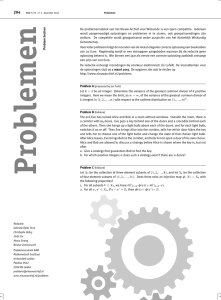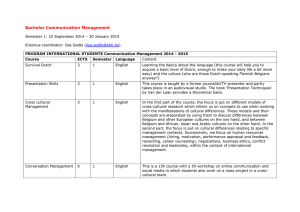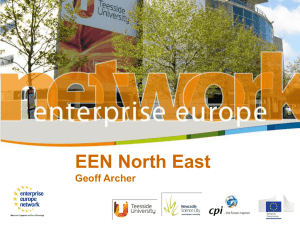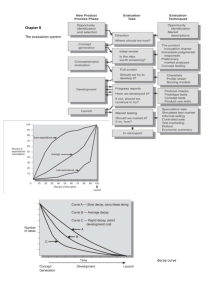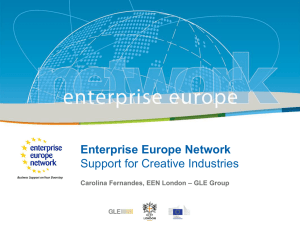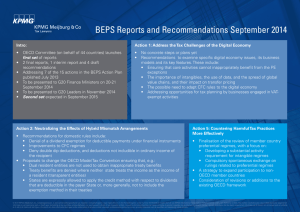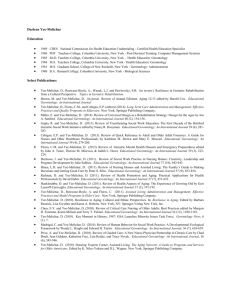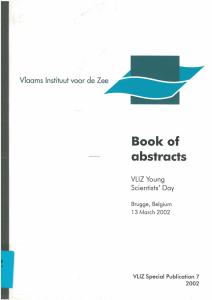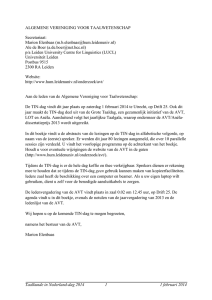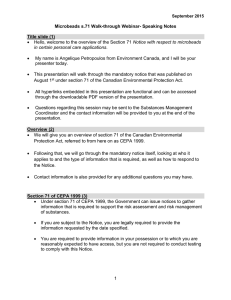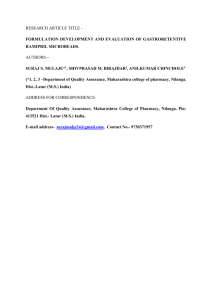Japanse alzheimer test
advertisement
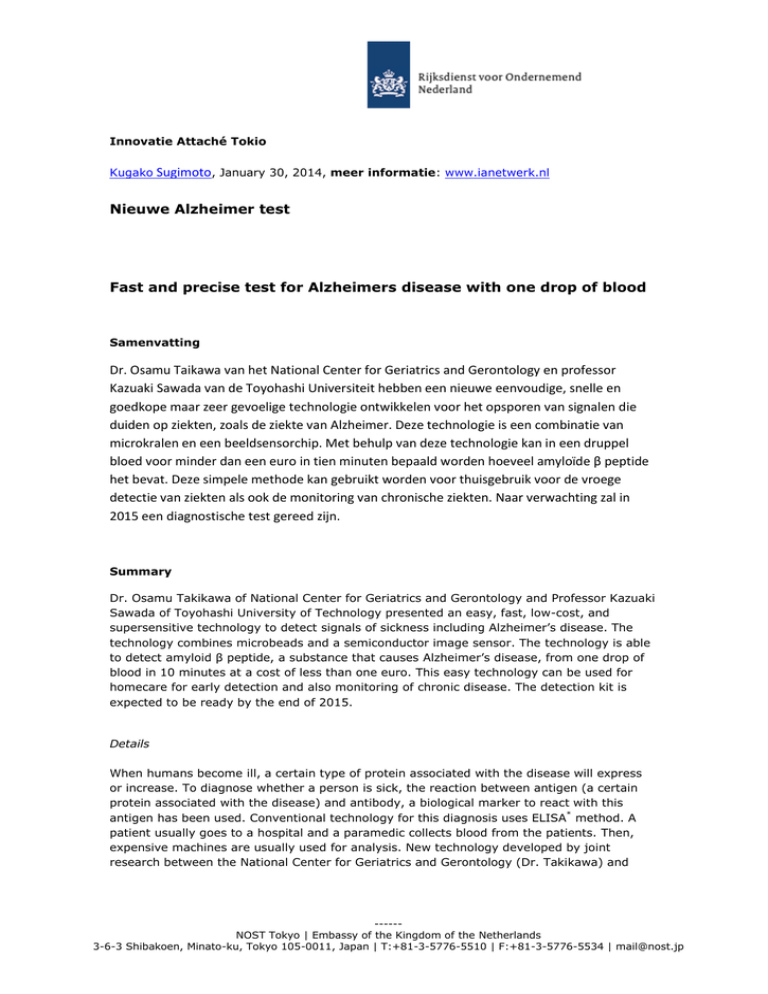
Innovatie Attaché Tokio Kugako Sugimoto, January 30, 2014, meer informatie: www.ianetwerk.nl Nieuwe Alzheimer test Fast and precise test for Alzheimers disease with one drop of blood Samenvatting Dr. Osamu Taikawa van het National Center for Geriatrics and Gerontology en professor Kazuaki Sawada van de Toyohashi Universiteit hebben een nieuwe eenvoudige, snelle en goedkope maar zeer gevoelige technologie ontwikkelen voor het opsporen van signalen die duiden op ziekten, zoals de ziekte van Alzheimer. Deze technologie is een combinatie van microkralen en een beeldsensorchip. Met behulp van deze technologie kan in een druppel bloed voor minder dan een euro in tien minuten bepaald worden hoeveel amyloïde β peptide het bevat. Deze simpele methode kan gebruikt worden voor thuisgebruik voor de vroege detectie van ziekten als ook de monitoring van chronische ziekten. Naar verwachting zal in 2015 een diagnostische test gereed zijn. Summary Dr. Osamu Takikawa of National Center for Geriatrics and Gerontology and Professor Kazuaki Sawada of Toyohashi University of Technology presented an easy, fast, low-cost, and supersensitive technology to detect signals of sickness including Alzheimer’s disease. The technology combines microbeads and a semiconductor image sensor. The technology is able to detect amyloid β peptide, a substance that causes Alzheimer’s disease, from one drop of blood in 10 minutes at a cost of less than one euro. This easy technology can be used for homecare for early detection and also monitoring of chronic disease. The detection kit is expected to be ready by the end of 2015. Details When humans become ill, a certain type of protein associated with the disease will express or increase. To diagnose whether a person is sick, the reaction between antigen (a certain protein associated with the disease) and antibody, a biological marker to react with this antigen has been used. Conventional technology for this diagnosis uses ELISA* method. A patient usually goes to a hospital and a paramedic collects blood from the patients. Then, expensive machines are usually used for analysis. New technology developed by joint research between the National Center for Geriatrics and Gerontology (Dr. Takikawa) and -----NOST Tokyo | Embassy of the Kingdom of the Netherlands 3-6-3 Shibakoen, Minato-ku, Tokyo 105-0011, Japan | T:+81-3-5776-5510 | F:+81-3-5776-5534 | mail@nost.jp Toyohashi University of Technology (Prof. Sawada) is also based on antigen-antibody reactions. However, it detects the slight potential change by using a semiconductor image sensor while ELISA detects a color change associated with the reaction. A semiconductor image sensor is able to read the potential change at the surface of reaction site on the chip with microfluids by changing it into electrical signals. Semiconductor image sensor consists of 16,384 elements (128 × 128 pixels) and can detect slight potential changes even for multiple reactions. In addition, for better sensitivity, spherical surface of magnetic microbeads (0.2~3 μm) provides more attachment sites of antigens compared to the flat surface of conventional ways (Fig. 1). Fig. 1 Magnetic microbeads attaching antibodies react with targeted proteins (purple) and a detector catches the potential change. In a practical use for homecare, a patient collect a drop of blood with using a blood collecting puncture device. A drop of blood is placed on the plasma separation membrane on the cassette-type sensor with a chip/microfluid channels (Fig. 2). The sensor is then inserted to the reading device and is left for 10 minutes to develop reactions. Potential changes during the reaction are detected and the reading device sends the results into convenient devices such as mobile phones. -----NOST Tokyo | Embassy of the Kingdom of the Netherlands 3-6-3 Shibakoen, Minato-ku, Tokyo 105-0011, Japan | T:+81-3-5776-5510 | F:+81-3-5776-5534 | mail@nost.jp Fig. 2 A drop of blood is placed on the plasma separation membrane for analysis and cassette-type sensor is inserted in a reading device. All procedure from pricking the finger to getting the results in a smart phone can be conducted within 30 min. Cost for one sample would be less than one euro, while ELISA method costs around 10 times more. As long as biomarkers are available for different diseases, multiple and simultaneous tests are possible with this device. Early detection of Alzheimer’s disease will be the main target, while monitoring of other diseases such as diabetes and infectious diseases can also use this technology. Developers expect to prepare the products by the end of 2015. Bronnen Source 1. Science Portal, Jan. 23, 2014 (in Japanese) 2. Press release, National Center for Geriatrics and Gerontology Jan. 21, 2014 (in Japanese) * ELISA (Wikipedia) Streamer The Japanese research teams jointly developed an easy, fast, cheap, and sensitive technology to detect diseases. -----NOST Tokyo | Embassy of the Kingdom of the Netherlands 3-6-3 Shibakoen, Minato-ku, Tokyo 105-0011, Japan | T:+81-3-5776-5510 | F:+81-3-5776-5534 | mail@nost.jp
